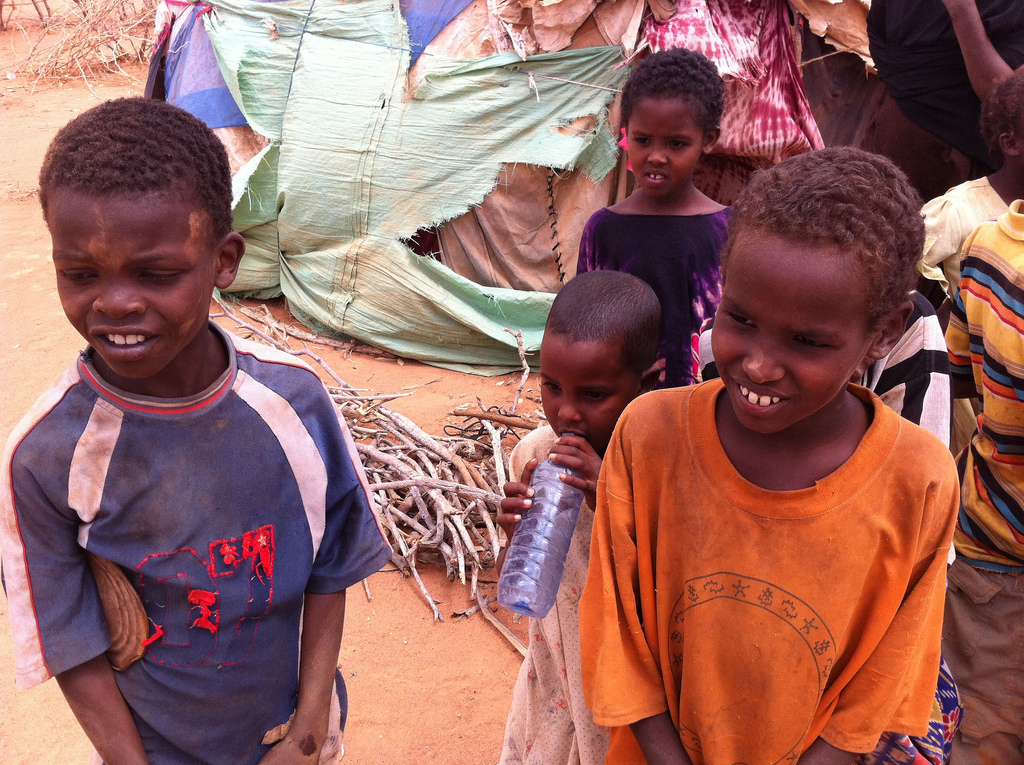"Let's care – and let's talk about refugees in Kenya"
May 22 Refugees have been living in Kenya for decades, writes Brian Dan Migowe, 24, a Commonwealth Correspondent from Kenya, who argues that the rest of the world has a role in helping to solve the problem.
Refugees have been living in Kenya for decades, writes Brian Dan Migowe, 24, a Commonwealth Correspondent from Kenya, who argues that the rest of the world has a role in helping to solve the problem.
Kenya has not failed its refugees. In fact some appreciation should come her way for being a host not only to refugees from nearby Somalia, but also from the greater Horn of Africa for over 20 years.
In contrast, the international community has failed and continues to turn a blind eye to the ever-increasing refugee population in Daadab camp. Dadaab, reportedly the world’s largest refugee camps, is situated in the north east of Kenya.
I have reason to believe that the United Nations High Commission for Refugees is not fully prepared to handle the influx of the refugee population at the Horn of Africa into the Kenyan territorial boundaries.
Under international law, states are prohibited from forcibly returning people to a place where they would be at real risk of human rights violations. This is known as the principle of non-refoulement. Kenya is a party to the 1951 Refugee Convention and the 1969 Organisation of African Unity Refugee Convention. Refugees are also protected under the Kenya Refugee Act 2006 from forcible return to countries where their safety is not guaranteed and they may face persecution.
On 11 April, Deputy President William Ruto said the government had told the United Nations High Commission for Refugees that it must close Dadaab refugee camp within three months and return its residents to Somalia, otherwise Kenya would ‘relocate them ourselves.’ A strong statement indeed from the executive, which leaves all of us with the question, ‘what about non-Somali refugees? Where do they go? What considerations have been made for this process?’
Kenya is not the first to promise to do this. Tanzania repatriated Burundian refugees back to Burundi. Let’s all note this is by no mean a comparison for making two wrongs into a right. Refugee repatriation is not voluntary when host country authorities deprive refugees of any real freedom of choice through outright coercion or measures such as, for example, reducing essential services.
Generalised violence and insecurity persists in Somalia and residents have frequently been subject to attacks. If refugees are sent back to these areas, they risk human rights abuses and extortion. A lot has been done by Kenya in efforts to secure peace for her neighbouring country by sending the Kenya Defence Forces to seize territories held by Al-Shabaab –a Somali terror group. The most unfortunate flip-side of this are the intermittent attacks by Al-Shabaab within Kenya as vengeance, the most deadly being the killing of 147 college students from Garissa University on the 2nd of April, a town 100 km from the Kenya-Somali border. The African Union under the umbrella of Amison also has its troops on the ground, patrolling and monitoring the situations in Somalia from escalating. If anything, the presence of troops is a sign of peace and not an engagement for war for Somalia. It’s time for the Somali refugees to voluntarily move back to their country to help set up administrative structures and channels of authority.
This is not the first time that plans to return refugees to Somalia have been discussed. In November 2013, a tripartite agreement was signed between the Governments of Kenya and Somalia, and UNHCR, setting out a framework for the voluntary return of refugees to Somalia. The pilot phase began in December 2014.For refugee returns to be lawful, they must be genuinely voluntary – without undue pressure and with returnees’ safety and dignity guaranteed.
What the Kenyan government faces is a slow process in the voluntary return of the refugees and continued attack on its citizens by Al-Shabaab, which a report says has some sympathisers among Somali refugees in Daadab. It thus becomes inevitably difficult for any reasonable man to distinguish between a once innocent refugee seeking asylum and the converted Al-Shabaab sympathiser in the same camp, targeting the citizens of the host country.
These are just a few examples of collective government struggles to protect refugees. But the United Nations, as well as the United States and other western governments, have further failed refugees across Africa and other parts of the world by allowing them to be warehoused in camps for 10, 20, 30 or more years without such basic human rights as freedom of movement, protection from violence, and ability to support their families. Before Kenya is condemned in the eyes of the international community, recognition of the difficulties it faces today has to be addressed, for it’s a government’s duty to provide security – both internal and along its territorial boundaries – to its citizen as a first priority.
photo credit: IMG_0445_JPG via photopin (license)
………………………………………………………………………………………………………
About me: I am a law student with a passion for writing and youth advocacy. I observe people, nature, the environment and daily life and am enthusiastic about sharing them on pen and paper.
I am an open-minded individual who acknowledges the diversity of the world’s population. Sometimes I am awed by how life plays out, but in writing I make the story as I want it. My hobbies are swimming and indoor games.
…………………………………………………………………………………………………………………
Opinions expressed in this article are those of the author and do not necessarily represent the views of the Commonwealth Youth Programme. Articles are published in a spirit of dialogue, respect and understanding. If you disagree, why not submit a response?
To learn more about becoming a Commonwealth Correspondent please visit: http://www.yourcommonwealth.org/submit-articles/commonwealthcorrespondents/
…………………………………………………………………………………………………………………




